Fish Species Seasonality in the Riviera Maya
| Species | Jan | Feb | Mar | Apr | May | Jun | Jul | Aug | Sep | Oct | Nov | Dec |
|---|---|---|---|---|---|---|---|---|---|---|---|---|
| Blackfin Tuna | ||||||||||||
| Blue Marlin | ||||||||||||
| Bonito | ||||||||||||
| Grouper | ||||||||||||
| Mackerel | ||||||||||||
| Mahi Mahi | ||||||||||||
| Sailfish | ||||||||||||
| Skipjack Tuna | ||||||||||||
| Snapper | ||||||||||||
| Triggerfish | ||||||||||||
| Wahoo | ||||||||||||
| White Marlin |
Blackfin Tuna
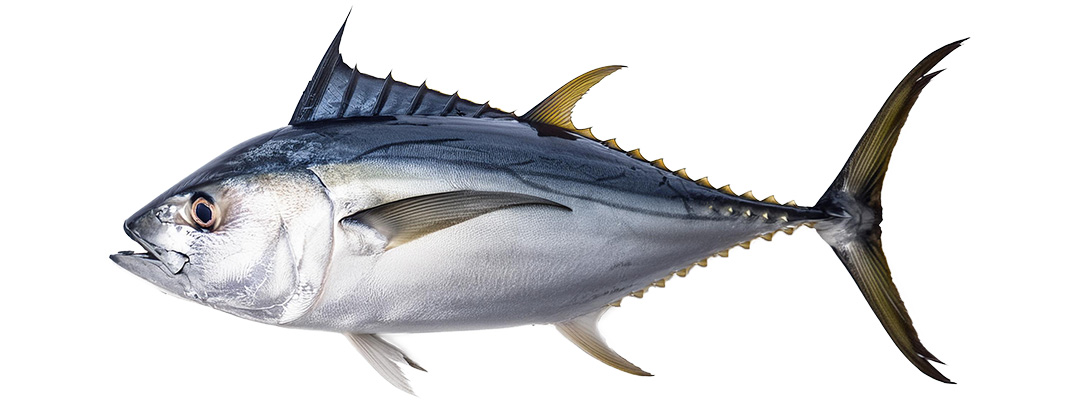
Description
The Blackfin Tuna (Thunnus atlanticus) is a compact, powerful member of the Scombridae family, renowned for its spirited fight and culinary value. Distinguished by a dark blue to black back, iridescent silver sides, and a signature yellow lateral line, this pelagic species thrives in the warm waters of the Caribbean and Gulf of Mexico. Typically reaching lengths of 3 feet and weights up to 46 pounds, the Blackfin Tuna boasts a robust, streamlined body built for speed and endurance, making it a prized target for sport fishing enthusiasts.
Seasonality
In the Riviera Maya, Blackfin Tuna are present year-round, but their abundance fluctuates with the seasons. The peak season for Blackfin Tuna fishing typically occurs between June and July, when warmer waters attract large schools of these energetic predators. While still present during the rest of the year, their numbers are less concentrated.
Blue Marlin
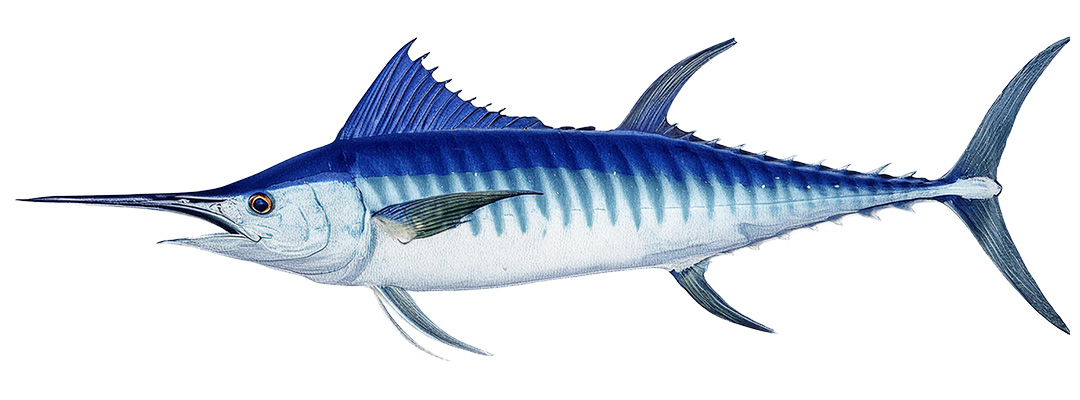
Description
The Blue marlin (Makaira nigricans) is an iconic, apex predator belonging to the Istiophoridae family, celebrated for its remarkable size, strength, and acrobatic displays when hooked. Distinguished by a cobalt blue back that fades to silvery white on its belly, this magnificent fish also features a distinctive elongated upper jaw forming a spear-like bill, and a tall, pointed first dorsal fin. Reaching lengths of up to 16 feet and weights exceeding 2,000 pounds, the Blue marlin inhabits tropical and temperate oceans worldwide.
Seasonality
In the Riviera Maya, Blue marlin are present throughout the year, but their abundance varies with the seasons. The peak season for Blue Marlin fishing typically begins in late spring, with May and June being prime months for encounters with these magnificent fish. The warm waters and plentiful baitfish during this period create ideal conditions for Blue marlin to hunt and feed. While still present during the rest of the year, their numbers are less consistent outside of the peak season.
Bonito
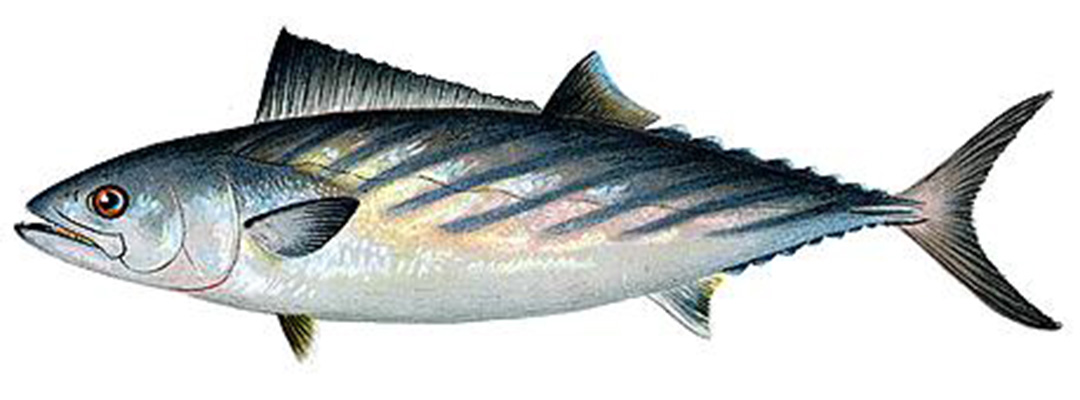
Description
The Bonito (Sarda sarda) is a sleek, agile member of the Scombridae family, recognized for its striking striped pattern and spirited fighting ability. Characterized by a dark blue back adorned with oblique, wavy lines, and a silvery white belly, this pelagic species inhabits both temperate and tropical waters. Typically reaching lengths of up to 2.5 feet and weights of around 22 pounds, the Bonito boasts a streamlined body built for speed and endurance, making it a popular target for sport fishing enthusiasts.
Seasonality
In the Riviera Maya, Bonito are present year-round, but their abundance varies with the seasons. The peak season for Bonito fishing typically occurs during the winter months, from December to February, when cooler water temperatures and abundant baitfish attract large schools of these fast-swimming predators. While still present during the rest of the year, their numbers are less concentrated.
Grouper
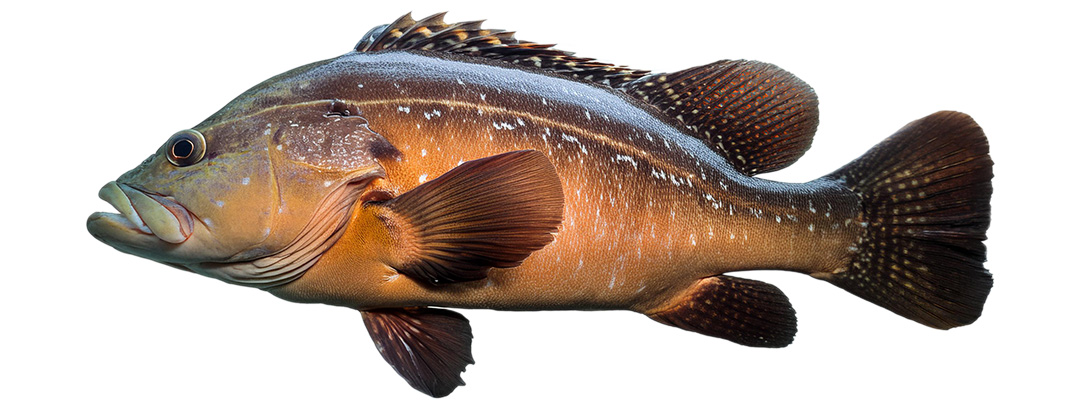
Description
Groupers (Epinephelinae) are a diverse subfamily of robust, predatory fish belonging to the Serranidae family. Characterized by their stout bodies, large mouths, and prominent fins, these demersal fish inhabit a variety of marine environments, including coral reefs, rocky bottoms, and mangroves. With over 200 species worldwide, groupers vary considerably in size, coloration, and behavior, but they share a common reputation for their powerful swimming ability and ambush predation tactics.
Seasonality
In the Riviera Maya, grouper are present year-round, but their availability and behavior can vary depending on the species and season. The peak season for grouper fishing typically occurs during the warmer months, from April to October, when they are more active and aggressively feeding. However, some species, like the Black Grouper, can be caught throughout the year with the right techniques and knowledge of their preferred habitats.
It is important to note that there is a closed season for grouper fishing in Quintana Roo, the Mexican state where the Riviera Maya is located. This closure usually takes place from February 1st to March 31st, during the peak spawning season, to protect their reproduction and ensure the sustainability of the fishery.
Mackerel
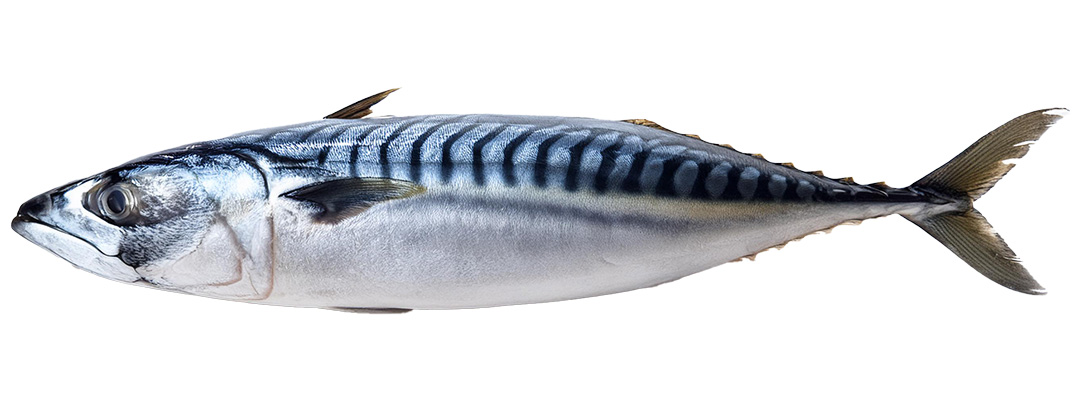
Description
Mackerel (Scombridae) are a diverse family of sleek, fast-swimming fish renowned for their streamlined bodies, forked tails, and vibrant coloration. These pelagic species are characterized by their numerous finlets behind the dorsal and anal fins, as well as their oily flesh, rich in omega-3 fatty acids. With over 50 species worldwide, mackerels vary in size, ranging from the smaller Spanish mackerel (Scomberomorus maculatus) to the larger king mackerel (Scomberomorus cavalla). These voracious predators inhabit a variety of marine environments, playing a crucial role in the ecosystem as both prey and predator.
Seasonality
In the Riviera Maya, mackerel is present year-round. However, their abundance and behavior fluctuate with the seasons and is specific to particular species:
Spanish Mackerel: The prime time for catching Spanish Mackerel typically occurs during the spring and summer months, from April to September, when warmer water temperatures and abundant baitfish attract them closer to shore.
King Mackerel: There are two main peak seasons for King Mackerel in the Riviera Maya:
- Winter: December to February, when cooler waters attract baitfish and larger King Mackerel closer to shore.
- Spring: May to July, when warmer waters bring an influx of smaller King Mackerel, often referred to as “Cero Mackerel”.
Mahi Mahi
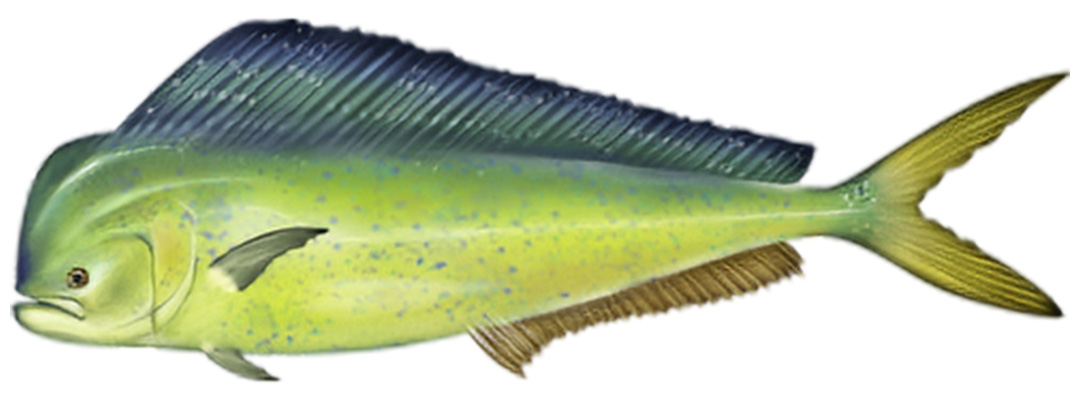
Description
The Mahi-Mahi (Coryphaena hippurus), also known as dorado or dolphinfish, is a vibrant, fast-growing member of the Coryphaenidae family. Characterized by its compressed body, elongated dorsal fin, and distinctive forehead profile in males, this pelagic species is renowned for its iridescent colors, ranging from golden to green and blue hues. Reaching lengths of up to 6.5 feet and weights exceeding 90 pounds, the Mahi-Mahi inhabits tropical and subtropical waters worldwide, making it a sought-after target for both sport fishing and culinary enthusiasts.
Seasonality
In the Riviera Maya, Mahi-Mahi can be found year-round, but their abundance varies depending on the season. The peak season typically occurs from late spring to early fall, with May to July being prime months for encountering large schools of Mahi-Mahi. During this period, the warmer water temperatures and abundant baitfish create ideal conditions for these voracious predators.
While still present during the rest of the year, their numbers may be less consistent outside of the peak season. However, anglers can still find success by targeting areas with floating debris, sargassum patches, or temperature breaks, where Mahi-Mahi often congregate in search of food and shelter.
Sailfish
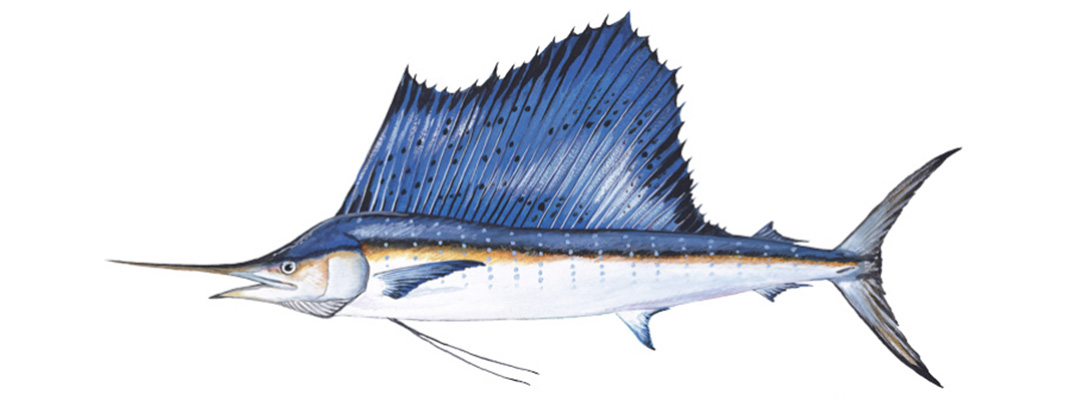
Description
The sailfish (Istiophorus platypterus) is a magnificent, highly sought-after member of the Istiophoridae family, renowned for its impressive speed and agility. Distinguished by its elongated, sail-like dorsal fin, which can be raised or lowered at will, this pelagic species also boasts a streamlined body, an extended upper jaw forming a bill, and a vibrant coloration ranging from cobalt blue to silver. Reaching lengths of up to 11 feet and weights exceeding 220 pounds, the sailfish inhabits tropical and subtropical waters worldwide, making it a prized target for sport fishing enthusiasts.
Seasonality
In the Riviera Maya, sailfish are present year-round, but their abundance varies significantly with the seasons. The peak season for sailfish fishing typically occurs from late winter to early summer, with March through June being the prime months for encountering these magnificent fish. During this period, the warmer waters and plentiful baitfish attract large schools of sailfish to the region. While still present during the rest of the year, their numbers are considerably lower outside of the peak season.
Skipjack Tuna
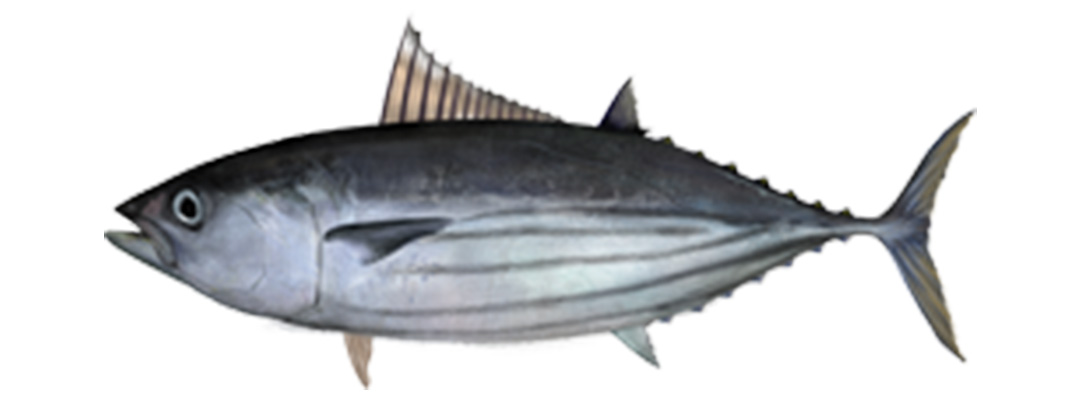
Description
Skipjack Tuna (Katsuwonus pelamis) are streamlined, torpedo-shaped fish that is a highly migratory, pelagic species found in tropical and warm-temperate waters worldwide. These tuna are opportunistic feeders, preying on a variety of small fish, squid, and crustaceans, and can grow to a maximum length of around 3.3 feet and weight of up to 76 pounds. Skipjack tuna are found globally in tropical, subtropical, and warm temperate waters. Being highly migratory, these tuna travel long distances for food and reproduction, often following ocean currents and temperature gradients.
Seasonality
Skipjack tuna are present year-round in the waters off the southern Riviera Maya coastline due to the consistently warm temperatures. However, there may be some seasonal fluctuations in abundance related to their migratory patterns and prey availability. Generally, peak fishing seasons for skipjack tuna in this region occur during the spring and summer months when water temperatures are highest and bait fish populations are abundant.
Snapper
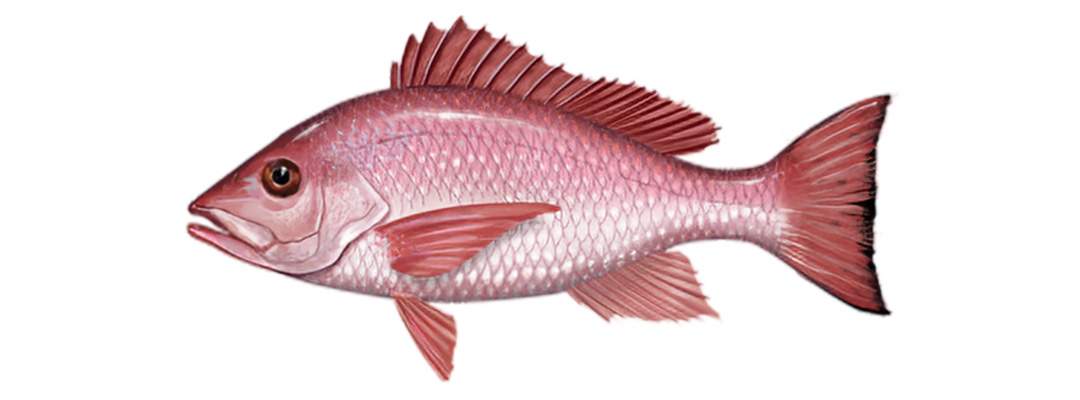
Description
Snappers (Lutjanidae) are a diverse family of colorful, predatory fish known for their culinary value and sporting qualities. Characterized by their compressed bodies, large mouths with sharp teeth, and forked tails, these demersal fish inhabit a variety of marine environments, including coral reefs, rocky bottoms, and mangroves. With over 100 species worldwide, snappers vary in size, coloration, and behavior, but they share a common reputation for their intelligence, wariness, and powerful fighting ability when hooked. Snapper is also a popular food fish, prized for its mild, sweet flavor and firm, white flesh.
Seasonality
In the Riviera Maya, snapper species are present year-round, but their abundance and behavior can vary depending on the species and season. Generally, snapper fishing is excellent throughout the year, with certain species more readily available during specific months.
Spring and Summer (April-September): This is considered the peak season for many snapper species, including Red Snapper, as they move closer to shore for spawning and feeding.
Fall and Winter (October-March): While snapper fishing remains good, some species like Cubera Snapper and Yellowtail Snapper may be more prevalent during these cooler months.
Triggerfish
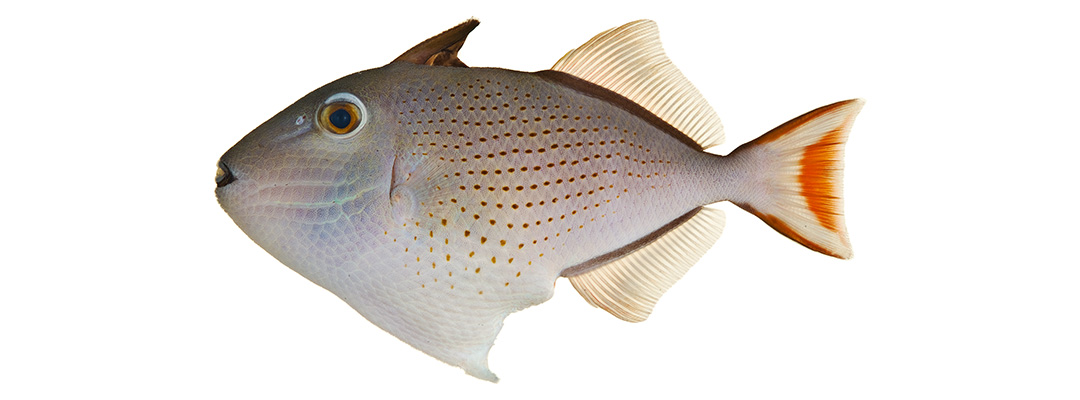
Description
Triggerfish (Balistidae) are a family of vibrant, laterally compressed fish characterized by their unique triggering mechanism on the dorsal fin. This mechanism involves a sturdy first spine that can be locked into an upright position by a smaller second spine, providing protection from predators. Triggerfish also have strong jaws with specialized teeth for crushing shells and hard-bodied prey. These fish inhabit tropical and subtropical waters worldwide, frequenting coral reefs and rocky bottoms. With over 40 species, triggerfish exhibit diverse coloration and patterns, making them a captivating sight for beginner anglers.
Seasonality
In the Riviera Maya, triggerfish are present year-round due to the region’s warm, tropical waters. They inhabit various reef environments and can be encountered while snorkeling, diving, or fishing. However, their abundance and behavior can vary depending on the species and specific location.
Some species, like the Queen Triggerfish and Gray Triggerfish, are more common in shallower waters, while others, like the Ocean Triggerfish, prefer deeper reefs. While there isn’t a distinct peak season for triggerfish in the Riviera Maya, they tend to be more active and visible during the warmer months when food sources are abundant.
Wahoo
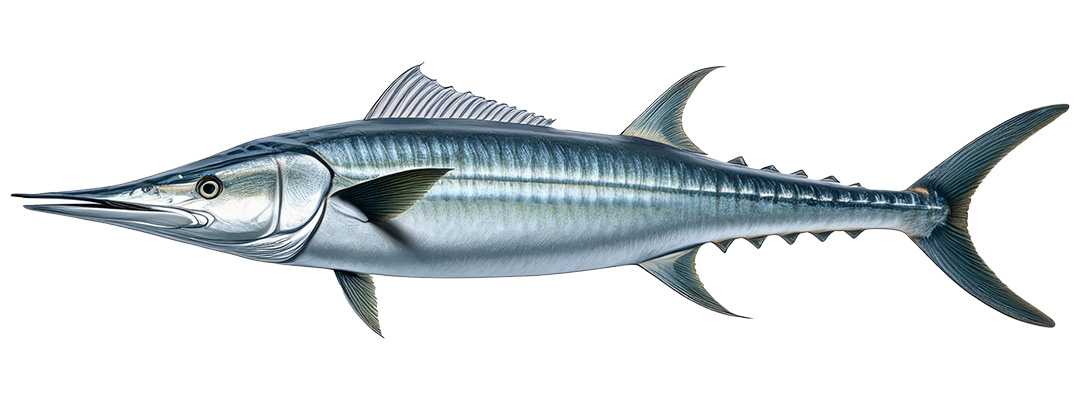
Description
The wahoo (Acanthocybium solandri) is a sleek, powerful member of the Scombridae family, renowned for its blistering speed and razor-sharp teeth. Characterized by an elongated body, iridescent blue back, and silvery sides adorned with irregular vertical blue bars, this pelagic species is a formidable predator. Reaching lengths of up to 8 feet and weights exceeding 170 pounds, the wahoo inhabits tropical and subtropical waters worldwide, making it a prized game fish for anglers seeking an adrenaline-fueled challenge.
Seasonality
In the Riviera Maya, wahoo are present year-round, but their abundance varies depending on the season. The peak season typically occurs during the winter months, from November to February, when cooler water temperatures and abundant baitfish attract these apex predators.
While still present during the rest of the year, their numbers may be less consistent outside of the peak season. However, anglers can still encounter wahoo throughout the year, particularly in areas with strong currents, temperature breaks, or underwater structures where they tend to congregate.
During the peak season, wahoo fishing can be exceptional, with anglers frequently landing multiple fish in a single outing. Trolling with high-speed lures or live bait is a popular and effective method for targeting these lightning-fast predators.
White Marlin
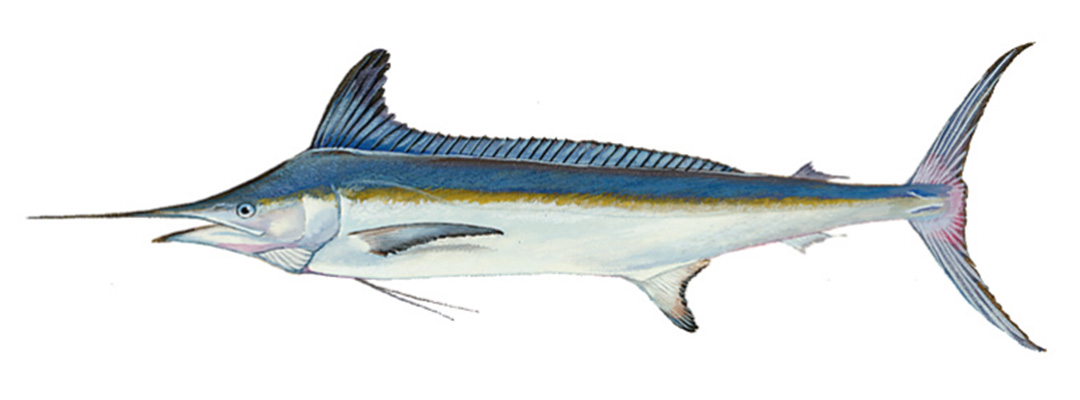
Description
The White marlin (Kajikia albida) is a sleek and agile member of the Istiophoridae family, celebrated for its acrobatic leaps and spirited fights. Distinguished by a cobalt blue to dark green back, silvery white underside, and faint vertical bars on its flanks, this pelagic species also boasts a rounded, elongated upper jaw forming a bill and a high, pointed first dorsal fin. Reaching lengths of up to 9 feet and weights exceeding 175 pounds, it inhabits tropical and subtropical waters, making it a sought-after target for sport fishing enthusiasts.
Seasonality
In the Riviera Maya, White marlin are present throughout the year, but their abundance varies with the seasons. The peak season for White marlin fishing typically begins in late spring, with May and June being prime months for encounters with these acrobatic fish. The warm waters and plentiful baitfish during this period create optimal conditions for White marlin to hunt and feed. While still present during the rest of the year, their numbers are less consistent outside of the peak season.

